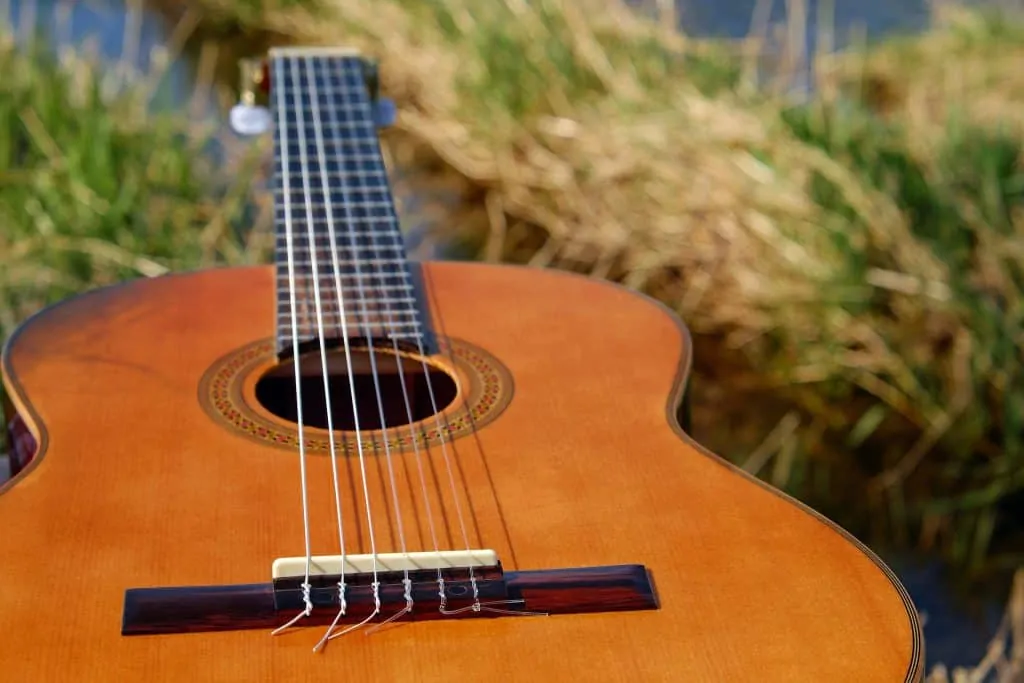Getting into performance can be intimidating. You might be a little nervous to take the leap of faith, thinking about all the horrible things that could happen. And you might not be sure how to captivate your listeners just yet. But it’s exhilarating to stand in front of a crowd of people and bare your soul. And if you go into your show with a few strategies, you’ll eliminate a lot of the anxiety that’s associated with performing because having a plan keeps you grounded.
Finding ways to be interactive with your listeners can help you fine tune your list of songs for future performances. Performing builds your confidence, motivates you to channel more creativity, and helps you find new ways to connect with people that resonate with your music. And whether you’re a songwriter or a cover artist, there’s a natural progression to the way you should create a set list. Consider the following concepts while you’re putting together your perfect set list to get you started.
Contents
Know Your Audience
Are you playing for people who want a mosh pit? Or is it just you and your little acoustic guitar in a coffee shop? Determining the character of your audience will help you select the right songs for your set. What do you think their expectations are by coming to your show? Do you think they’ll want to dance?
I play a lot of Dad music. But I write jazz songs, which presents me with an interesting choice. In most cases, I opt to arrange a set with either all Dad music or all Jazz. Even though you might be a very versatile artist, most listeners are looking for a certain vibe while attending a concert. So sticking with a certain genre will optimize your chances of connecting with your audience.
And if you’re touring, this set might change as your location does. For example, playing music in Denver will probably be a bit different than playing in Nashville. So it’s important to consider your demographic while you’re getting ready to choose songs for your set.
Choosing Interactive Songs to Connect with Your Audience
Think about the concerts you’ve been to where the artist finds ways to include the audience in a performance. At some point during the show, the artist starts giving you instructions, telling you to pull your cell phone out of your pocket until 10,000 people wave their lights back and forth. Or maybe they’ll encourage you to do the wave. Or sing along to a certain chorus.
What does it feel like to be a part of someone’s show? The best shows we see have an arc. The artist(s) start by captivating the audience with popular tunes. And then they build excitement until everyone’s clapping their hands and singing along. What are some songs you could add to your set that you might be able to use as connective tissue?
Exercise:
Think of a few ways you might be able to include your audience in a performance. Write them down. Some strategies that work for me are as follows:
- Encourage singing along if you’re performing a well-known song
- Start clapping. Your audience will probably follow.
Know Your Venue
In the same way that knowing your audience can help you determine how to build a set, knowing your venue is really important. Here in Denver, the iconic Red Rocks Theater resides. Red Rocks is famous for its silky sandstone walls and the phenomenal acoustics that swell within the theater. But it also has a certain cultural appeal. Locals think of Red Rocks as a sort of hippie haven. You probably won’t see a grunge concert in this venue. It’s more likely that you’ll see characters like Tash Sultana, Sublime, or Nahko and Medicine for the People. And knowing the culture of a place can give you a feel for the audience.
Additionally, venues tend to have their own guidelines. Some places will frown upon dancing, while others will have very few chairs. Make sure you know what to expect as far as the venue goes before you’re setting up your equipment.
Try to Vary Tempo & Key
Make sure to change up both the tempo and the key, or you’ll put your audience to sleep. Tempo adjustments will change the feeling of your show. You can amp it up by speeding up the beat or calm everybody down by playing a slow classic. And like tempo, key can determine the feel of a room. Variance of tempo and key will help you keep your show fresh, which will allow you to connect with your audience for longer.
Mastering Transitions
Mastering transitions between songs can be incredibly tricky. If you botch it, your show might sound choppy. But once you figure out how to move from one song into the next in a seamless way, your show will flow really easily.
One good approach to mastering transitions is coming up with clusters of songs. By pairing 2-3 songs at a time, you can start to generate a certain feel for you show. For example, by opening with up-beat tunes, you’ll get everyone dancing right from the start. The middle might take on a more serious cluster. And then the end could be your most popular tunes.
Quick Tips:
- Don’t be afraid to talk to your listeners. Sometimes sharing the inspiration for a song can help you connect in a really special way. And this strategy will help fill the space between songs.
- Choosing the right order of your songs will help you to transition seamlessly. By choosing songs that compliment one another, you’ll keep the audience captivated even in the space between songs.
Determine the Length of Your Set Ahead of Time
Every show has a specified time slot. It’s good to come prepared with a certain length and progression in mind. If you have a 60-minute slot, you’ll want to make sure that you have 15-20 songs (assuming that they’re all about 3-minutes long). You might take a break somewhere in the middle or slow your pace down. But it’s way better to have too many songs ready than not enough.
While you’re arranging your set list, consider these factors: Are your listeners getting what they’re paying for? Will your set give you a full two hours of music to pull from, or will you be stuck after just a half hour? And ultimately, what kind of impression do you want to leave your listeners with?
Your First & Last Song Are Most Important
Let’s be honest. Your listeners will be most attentive during the first and last songs of your set. Think of the first song as an opportunity to captivate everyone. The middle of your set can include new music, or some of your lesser known songs. But the final song needs to be a zinger if you want to leave everyone with a good impression. It needs to be climactic. This song could be a classic, since many people will like to sing along enthusiastically. You want to go out with a bang. And sometimes that means playing your least favorite song. But being able to tear down the wall between you and your audience will have a lifetime impression on the crowd. Why do we perform anyways? I do it to connect.
What Happens when Something Goes Wrong?
At some point, someone will break a string. You might have to hop off of stage because you spilled your drink. Some kind of malfunction will occur. So, think about ways you might use your set list to mitigate disaster when it finally strikes. Could your drummer play a 10-minute solo while you change your guitar string? What kind of story could you share with your audience while one of your band-mates handles her or his disaster? What if you keep a solo song in reserves just incase something like this happens?
We’d all like to believe that our performances will be perfect every time. But the reality is that this doesn’t happen. You’ll be lucky if you play a single perfect show during your lifetime. Coming up with a game plan in advance might help you manage a brief hiatus more elegantly when it happens. Additionally, it’s ok to tell your audience about what’s happening. Listeners tend to be more receptive to change if they know what’s causing it. They might even laugh along with you.
In Conclusion
I know performing can be really scary. It feels like you’re putting your soul on the line, and the way your listeners react can make or break a show. But coming into a show with a plan can help you make sure that you’ll connect with your audience so the performance will go smoothly. Ultimately, you control the flow of your show and your set list is the start of that process.


